In late 2006 I went to see Alan Fletcher’s retrospective at the Design Museum in London. It’s the only exhibition, before or since, where I’ve read every word on every caption for every piece of work. It was a masterclass in design. The piece of work that struck me most, more than the witty collage work or the posters written in Fletcher’s trademark handwriting, was a rub down sheet of Reuters logos. What I realised, whilst I was looking at that rub down sheet, are the massive technical restraints that limited identity design forty years ago. There was one logo and it only physically existed in a handful of sizes. The rules were kept simple. Apply the logo in the set position at the set size and don’t ask questions.
Forty years later, identity is referred to as brand and we use media banks to download brandmarks instead of using sheets of rub down logos. It comes as no surprise that people have started to question the “Consistency, consistency, consistency” mantra. In the last couple of years, more and more high profile projects have rejected this mantra in favour of a flexible approach to identity. In a world where some brands are seen on screens more than in print, flexible identity is a logical development. It’s also a development which changes the identity design process. We need to start considering why an identity is flexible, how it can change and what this communicates.
Michael Johnson recently suggested that flexible identity solves problems associated with multi-channel, multi-lingual brands by allowing them to flex and adapt to different circumstance. It’s true, today’s brands need to be used in many different ways across many different medium. This makes it nearly impossible to prescribe a fixed solution for every possible situation. One approach is to build in a level of flexibility so the identity can adapt to best suit the situation it’s in. Thinking like this sounds like a recent trend in design, so it may come as a surprise to learn that its roots are in Swiss modernist graphic design: Karl Gerstner’s identity for Boîte à musique, a record shop in Basel, in 1959.
Boîte à musique from Karl Gerstner: Designing Programmes recently republished by Lars Müller Publishers.
[Click image for a larger view.]
Even though the system is somewhat basic, Boîte à musique is undeniably a flexible identity. What’s more interesting than how this flexibility looks is how Gerstner describes it. He explains its ability to change, adapting to functional requirements, as its signature and style in one [1]. Instead of being remembered by its consistent appearance, Gerstner was interested in his identity being remembered for something less tangible like its overall style, tone or mood.
Skip forward 22 years to August 1st, 1981 and the worlds first video music channel starts broadcasting. In the words of VJ Nina Blackwood, all day, all night, in stereo. Designed as a blank canvas for creativity the MTV logo has changed innumerable times over the past 26 years. Yet in each iteration, it has remained fundamentally the same. Unlike Boîte à musique, MTV doesn’t change for functional reasons. MTV adapts on a purely stylistic level changing its look to match the latest graphic trends. The logo was conceived to embody a rock ‘n’ roll attitude that totally rejected corporate design. It took on the attitude of the audience it was broadcasting to and, to this day, it continues to change, constantly aligning itself to its audience’s taste.
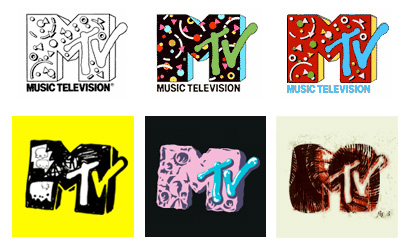
MTV logos, old and new.
The thing that the Boîte à musique and MTV identities have in common is the same characteristic which seems to appear in all flexible identity schemes — the brand as content in itself. This shift from the identity as a badge to the identity taking centre stage can be seen in brands where the content, service or product isn’t unique. For example, MTV’s content is indistinguishable from any other music channel so it’s important that the identity is somewhat entertaining in itself. Identities which remain rigidly consistent stop being entertaining after you’ve seen them once. Conversely, brands with strong, recognisable and unique products often don’t need flexible identities because they would add little or nothing. Apple is one of the most exciting brands of recent times yet the excitement comes through its products and philosophy of innovation, not through its static identity.
Karl Gerstner did something very interesting with Boîte à musique. He says that he didn’t feel bound to the identity for very long [2]. And so, after developing it to change to functional requirements, Gerstner added a second dimension to the flexibility: Playfulness. These two characteristics, functionality and playfulness, created a tension which manifested itself in visually arresting work. Boîte à musique didn’t always look the same. Instead, the tension generated by trying to be simultaneously functional and playful became the recognisable and consistent element of the identity. Gerstner started to think about identity operating on more than a visual level. He started thinking of identity communicating personality rather than simple communicating consistently.
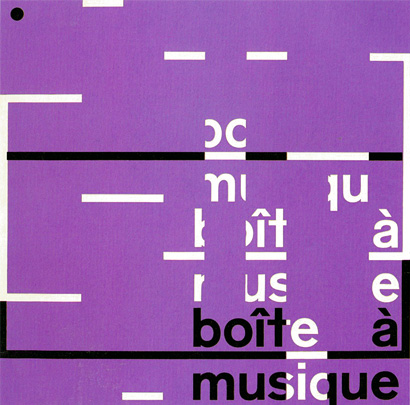
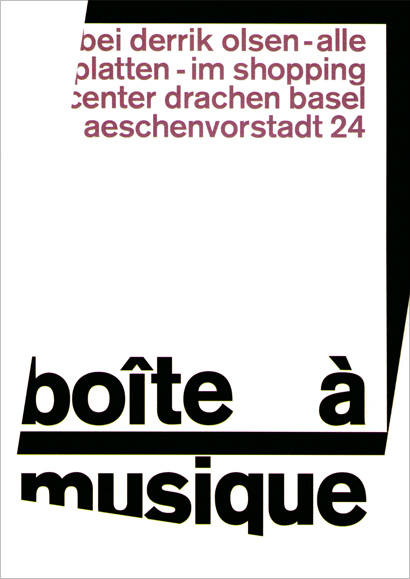
Applying the Boîte à musique identity in a playful way. From Visual Language by Karl Gerstner.
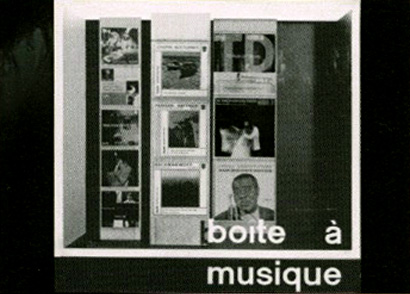
The identity becomes a showcase. Also from Visual Language by Karl Gerstner.
Even though this work is nearly fifty years old it contains important lessons for people developing flexible identity schemes today. Gerstner considered the personality he wanted to convey and then developed a system to express this personality. The identity didn’t look different every time for the sake of looking different. It looked different to communicate a very specific, highly considered thing. It communicated a personality, an identity in the human sense of the word identity. Something which is only possible by showing change over a period of time.
When we develop flexible identity schemes we need to consider how and why the identity changes, and even if it needs to change at all. This should be as important as the choice of colour palette or typeface. It’s a design decision in its own right and, like colour and typography, its choice is loaded with meaning.
Back to my Design Museum visit in late 2006 and it’s worth remembering the technical limitations that constrained an identity like Reuters forty years ago. These limitations are disappearing faster than ever and the notion of brand and identity is fundamentally changing with it. The possibilities for identity schemes of the future are exciting but in this excitement we shouldn’t lose sight of design fundamentals like understanding what we’re trying to communicate and why.
[1] From Karl Gerstner: Designing Programmes. Published by Lars Müller Publishers.
[2] From Visual Language by Karl Gerstner. Published by Hatje Cantz.
Jon Hewitt is a designer who works in London for brand specialists Moving Brands.






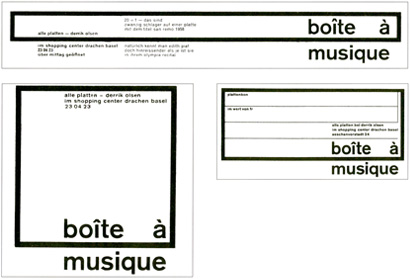
Thanks, Jon, for bringing Karl Gerstner into the flexible identity discussion -- the way Wally Ollins talks about it, you'd guess that the approach was just invented. I did have a couple issues, though:
The thing that the Boîte à musique and MTV identities have in common is the same characteristic which seems to appear in all flexible identity schemes — the brand as content in itself.
I disagree: in both examples (as well as in some Wolff-Olins recent work in the same vein), the brands work as structures for content -- filters, as it were. That's one of the more intriguing aspects of this flexible identity trend: these marks can only be fully understood in conjunction with context: they meld, synthesize, rather than overwhelm. They're almost literal interpretations of the idea of brand as cognitive virus.
This shift from the identity as a badge to the identity taking centre stage can be seen in brands where the content, service or product isn't unique.
Strictly speaking, content, services, and products are rarely unique, though our perceptions of them can be. In any event, the theory falls apart even with the examples given: when MTV came into the scene, it was unique (at least at the national level), but it's identity has been flexible since pretty much day one.
Again, thanks for the article.
On Feb.14.2008 at 03:41 PM